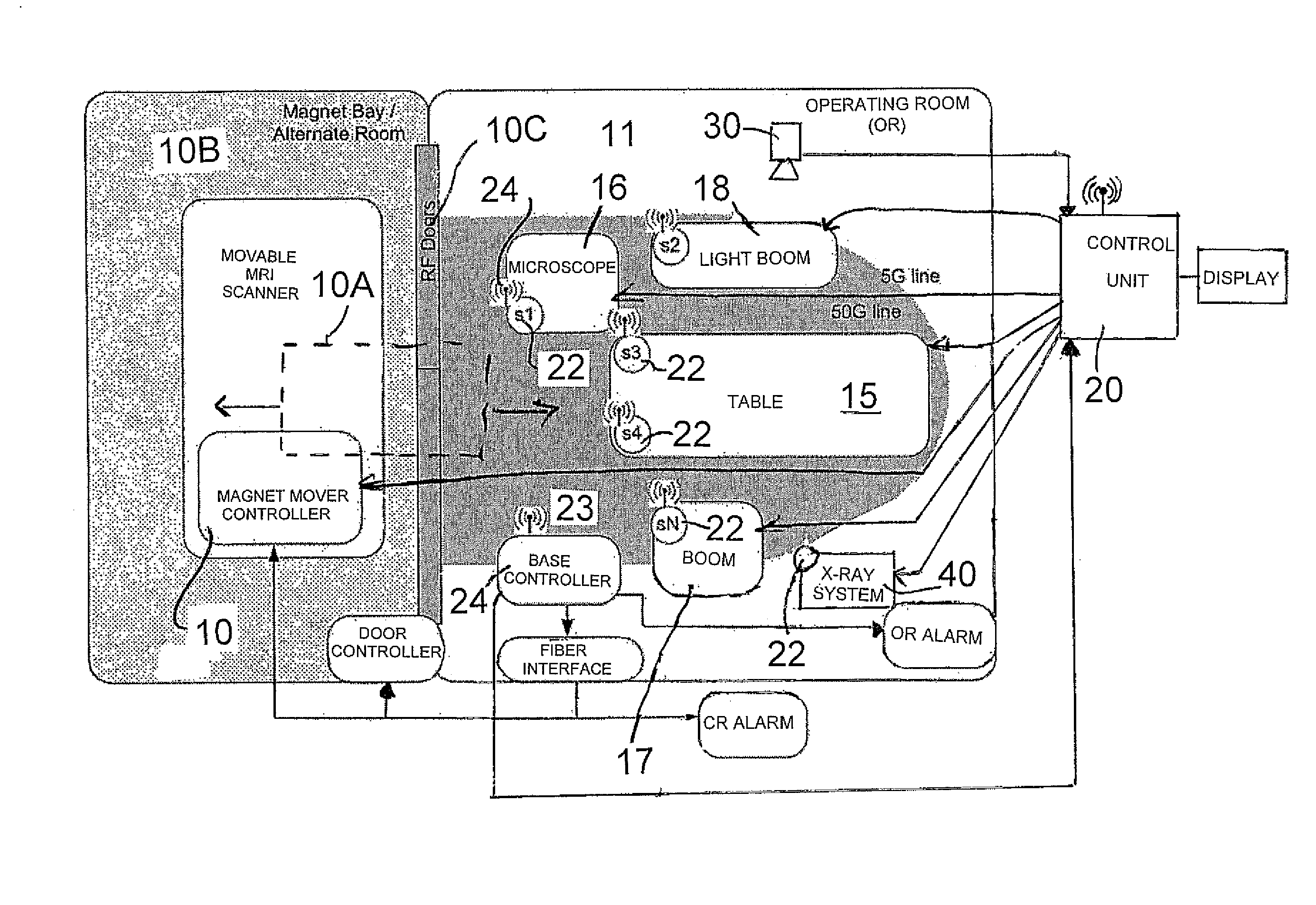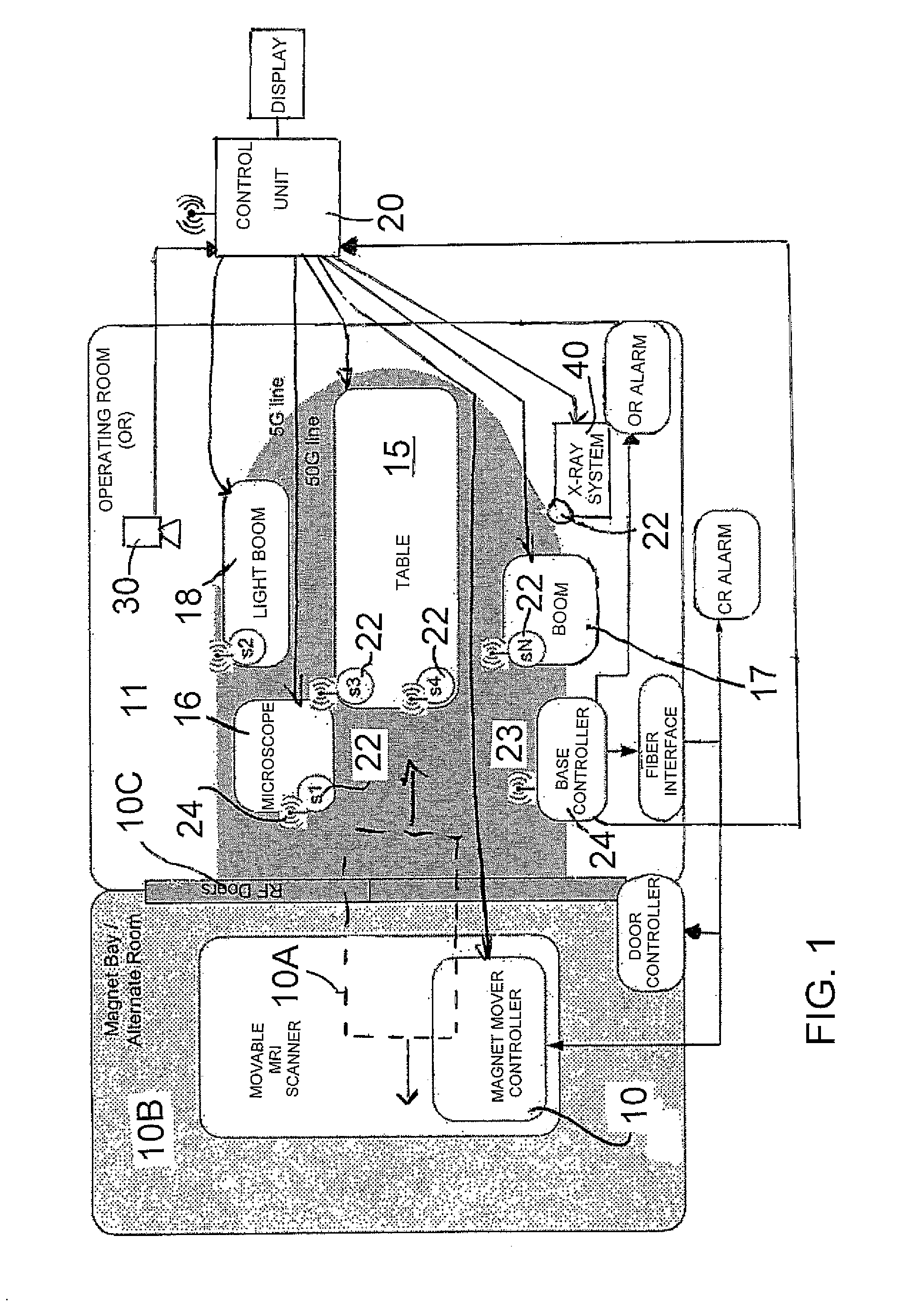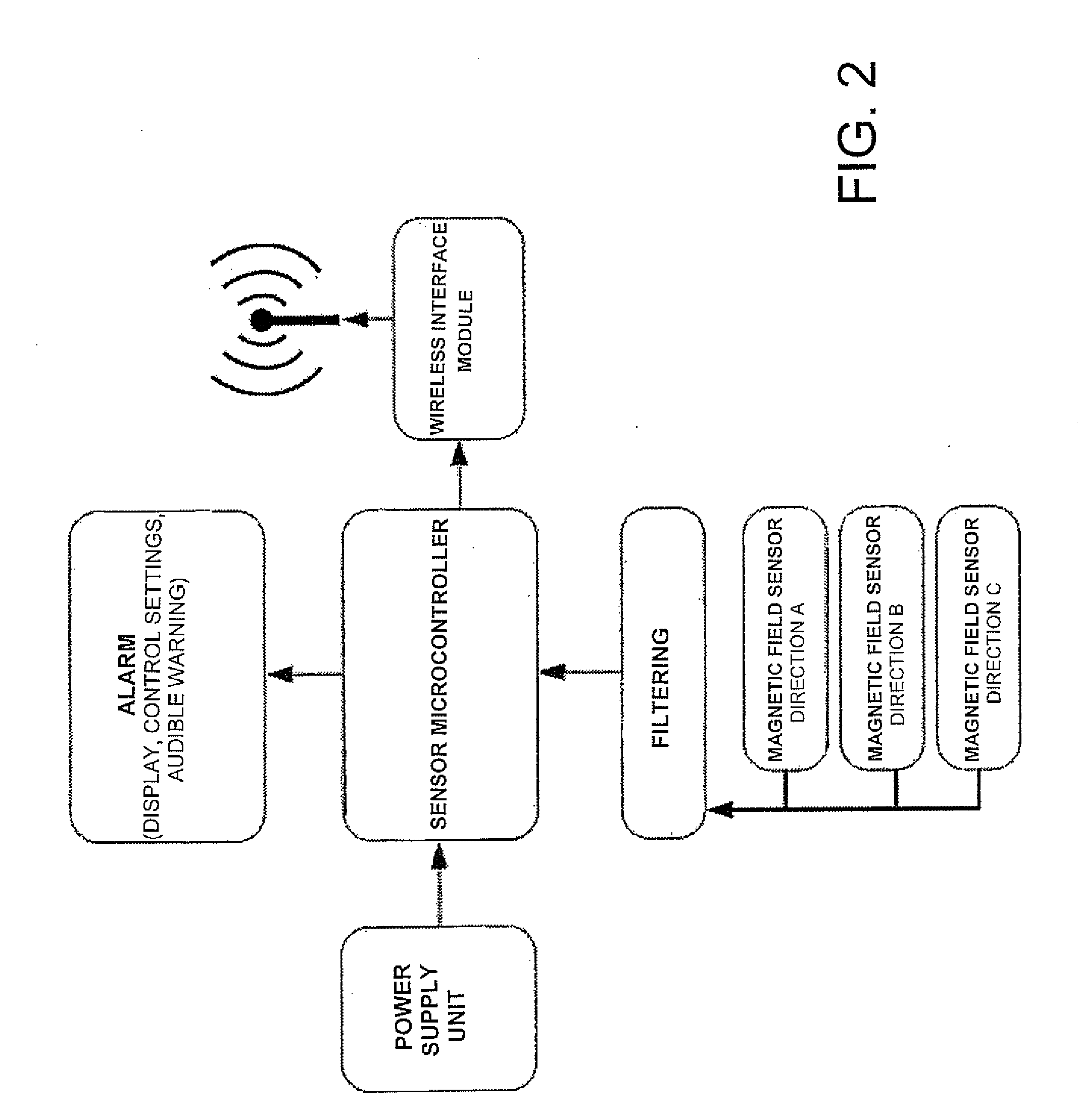MRI Safety System
a safety system and magnetic field technology, applied in the field of magnetic field safety system, can solve the problems of current system being vulnerable to human error, ferromagnetic objects which may become hazardous, and potential hazards, and achieve the effects of reducing the size of the sensor node, and reducing the risk of ferromagnetic objects becoming hazardous
- Summary
- Abstract
- Description
- Claims
- Application Information
AI Technical Summary
Benefits of technology
Problems solved by technology
Method used
Image
Examples
Embodiment Construction
[0108]The apparatus for carrying out medical procedures on a patient as used in the present invention includes a magnetic resonance imaging apparatus 10 of a conventional construction well known to persons skilled in this field. The system includes a magnet 10A for generating a magnetic field of sufficient intensity to carry out a magnetic resonance imaging procedure on the patient. This is associated with RF coils and gradient coils together with the control systems for operating these components which are not the subject of the present invention and thus will not be described in detail.
[0109]In the arrangement with which the present invention is concerned, the magnet 10A is movable between a magnet bay area 10B and an operating room 11. The room 11 may form one of a suite of rooms arranged around the bay 10B and into which the magnet 10A may move through doors 10C.
[0110]The magnet cooperates with a table 15 on which the patient is positioned for the imaging process. The table can ...
PUM
 Login to View More
Login to View More Abstract
Description
Claims
Application Information
 Login to View More
Login to View More - R&D
- Intellectual Property
- Life Sciences
- Materials
- Tech Scout
- Unparalleled Data Quality
- Higher Quality Content
- 60% Fewer Hallucinations
Browse by: Latest US Patents, China's latest patents, Technical Efficacy Thesaurus, Application Domain, Technology Topic, Popular Technical Reports.
© 2025 PatSnap. All rights reserved.Legal|Privacy policy|Modern Slavery Act Transparency Statement|Sitemap|About US| Contact US: help@patsnap.com



